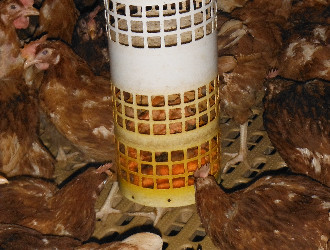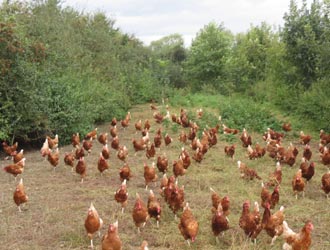Dietary composition
Dietary compositions should be discussed with a nutrient specialist and the feed supplier. It is important to understand that there is a link between dietary composition and injurious pecking. Hens which use the range well have the opportunity to supplement their own diet. The following different elements of a hen’s diet have been shown to affect injurious pecking >>>
Protein
Protein is an essential part of a hen’s diet and several studies have shown diets deficient in crude protein and certain amino acids have resulted in flocks with poorer plumage condition. As a producer or rearer it is important to carefully monitor protein levels in the diet, especially methionine. If you suspect a problem with the diet composition, then you should contact your feed supplier immediately so the problem can be investigate and where necessary resolved.
When changing diets it is important to avoid large drops in protein and amino acid levels. Speak to your nutrient adviser to discuss how best to achieve this. It is crucial to ensure the hens are at the correct weight before changing diets. Consult your nutrient adviser to ensure the timing is right.
Ensure that there is a balanced ratio of amino acids in the diet. Chickens require 13 essential amino acids (amino acids which cannot be synthesised by the hens’ body) to be present in the diet, in an appropriate balanced ratio. The ration will vary depending on the age of the hen. Speak to your nutritionist to discuss how best to achieve the correct ratio.
Fibre
Several studies have found lower levels of injurious pecking both at rear and during lay where extra fibre was added to the diet. This could be due to a number of reasons. For example, diluting the diet with fibre may increase the time the hens spend eating, reducing the time available for them to start feather pecking. Alternatively fibres may have a positive effect on gut motility and satiety. Accumulating coarse fibres in the gizzard may increase the feeling of satiety in the bird and reduce the propensity to peck and eat feathers of other birds.

|
|
 |
|
Provide the hens with supplementary fibre such as carrots or alfalfa.
|
One of the best ways to increase fibre in the hens diet is to get them out using the range.
|